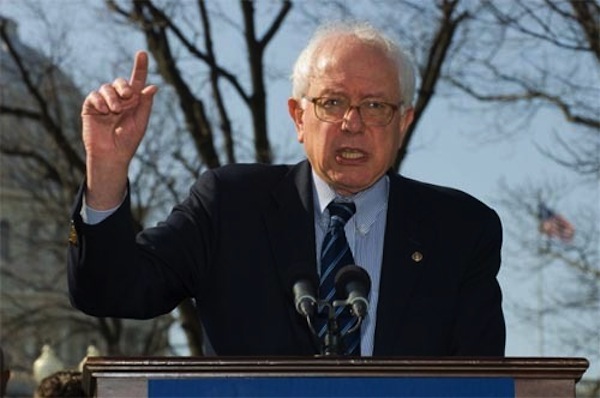A Political Marketplace is Developing for Independent Candidates


In 2012, at least fifty bona fide independent candidates have run for the US House and Senate. About twenty of those candidates have already withdrawn or been defeated. If half a dozen of the remaining contenders are elected, it would be a remarkable cap to an already extraordinary year for political independents.
Incumbent Bernie Sanders will likely win the Vermont Senate seat, and former Governor Angus King appears to be ahead in the Maine Senate race. Reliable polling for House races is still scarce, but it's entirely possible that no independents will score House wins.
We've been here before. Close to 40% of Americans identify themselves as independent voters, but our Congress is comprised almost entirely of partisans. In recent polls, 90% of voters have said they're dissatisfied with Congress. Chances are, things won't change dramatically this year, but a political marketplace is developing for independent candidates.
How Does an Independent Even Get Elected?
In business, statistics that indicate an under-served market lead to the development of products to serve it. The same could be replicated in the political world. But any legitimate independent strategy would have to start with the basics:
- Identify winnable House districts and Senate seats.
- Find and develop electable candidates for those winnable districts
- Create campaign strategies particularly suited to those districts and candidates
- Tactically execute the strategies
1. Winnable Districts & Seats
Longtime House Speaker Tip O'Neill famously taught that “all politics is local.” The adage was true for O'Neill, who spent most of his career as a Democratic leader in the House, and it's essential for successful independent candidacies.
Independent 'conspirators' should identify which of the 435 House districts make victory possible—or even likely—for an independent candidate. A House district that is a safe seat for a Republican running against a Democrat might be anything but safe if a strong independent is added to the mix.
A few possibilities for winnable districts are:
- Geographically compact—a district that lends itself to door-knocking, yard signage and local campaign events
- Significant ethnic or cultural aspects—a large Latino or Jewish population for example, demographics that are becoming increasingly independent.
- Traditionally low voter turnout—a district where voter registration and voter turnout campaigns can have impact
These few ideas are more applicable to House districts than to Senate seats, but are the kinds of characteristics that would make an independent candidacy credible.
2. The Right Candidate
When a potentially winnable district or state has been identified, it must be matched with the right candidate. Some considerations:
- Age, gender and ethnicity—perhaps a young Latina for instance, in a district with significant Hispanic population.
- Popular appeal and name recognition—perhaps a local business leader, or a past city council member
- Appeal across ethnic and cultural lines—a person who has worked successfully in the full community, in previous civic or business efforts
- Eligibility to run under state law—as an independent, and meeting residency requirements
- A fit to local circumstances and issues—perhaps a former G.I. in a military town, or a gay man in a district with significant LGBT population.
Citizens must find a candidate who fits the district. That person might not have gotten up this morning with an ambition to run for Congress—he or she will likely have to be recruited, but the pool is large; the typical House district contains 700,000 people.
3. The Right Strategies
Each campaign will be unique. A winning strategy for a densely populated Manhattan congressional district wouldn't work in a suburban district in the West, or in a small state with only one congressional representative. Among other things, look at:
- Media opportunities and challenges—in some urban districts, broadcast media may be prohibitively expensive in the early going—but some rural states are dominated by only three or four media markets, and broadcast advertising may be relatively inexpensive.
- Candidate strengths and incumbent weaknesses
- Legal requirements and limitations—typically products of state law
- Existing and potential voter registration and participation
Just as the candidate must fit the district, strategy will need to fit both the district and the candidate.
4. Tactical Execution
Tactics is all about the people—door-knockers, phone-dialers, and the supervisors to lead and motivate them. It's the ground game and the media game. It's organization and implementation—logistics, goal-setting and planning. Experience, energy and motivation are essential.
It Starts Early, and Develops Methodically
There is a desperate need for effective politics, the energy, and the political marketplace to implement change, but independent candidates should start early to overcome the institutional hurdles that slow tactical execution. Citizens who want change must find each other now, and begin working together.
*The Author is the founder of GreatReality.com. You can find information on all 2012 independent candidates IndeCan.org.



